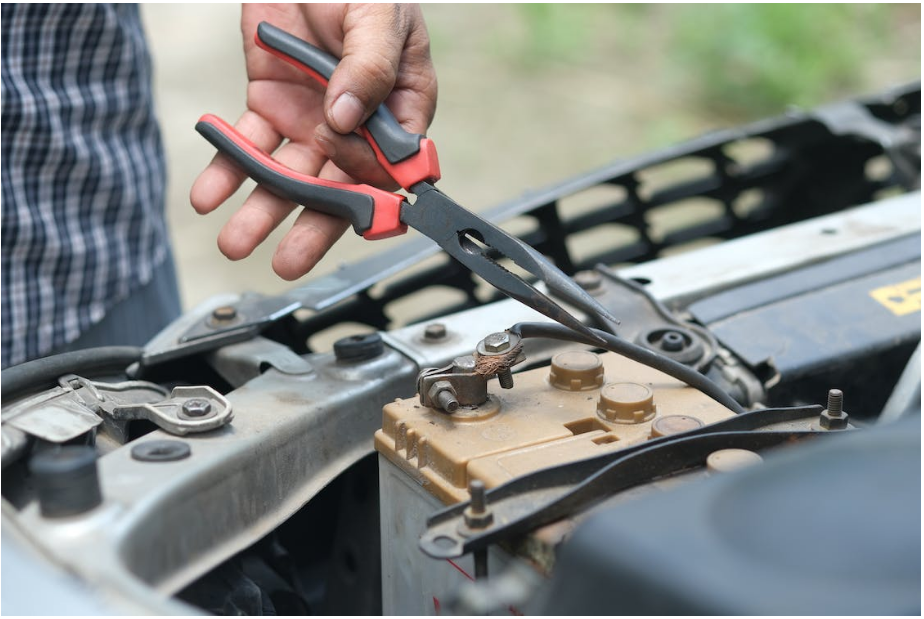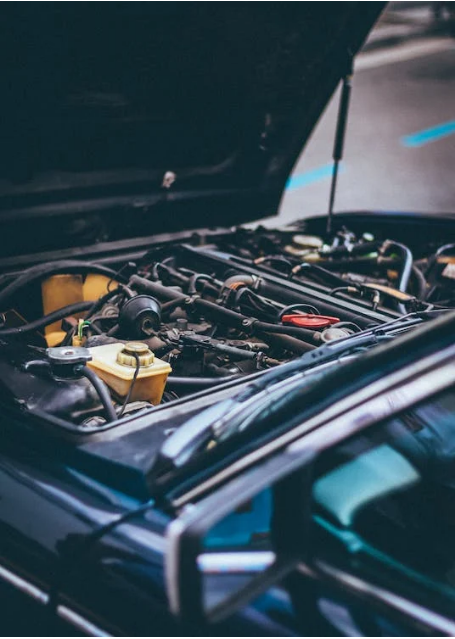How To Safely Disconnect A Car Battery: A detailed walkthrough of the process of detaching and removing the battery from your vehicle.
The battery in your vehicle is an essential component since it supplies the electricity necessary to start your vehicle as well as maintain the functionality of a variety of electrical systems.
You could discover that you need to unplug the battery, or even take it out of the device altogether, in some circumstances. This helpful article will explain why disconnecting and removing your car battery securely is important, as well as how to do it correctly.

The Reasons Why You Should Remove Your Car’s Battery
It is possible that removing the battery from your vehicle is the best course of action in certain circumstances; but, in most cases, merely disconnecting the battery will be sufficient to fulfill the goal of protecting it from being depleted while the vehicle is parked.
The fundamental idea behind this is that if you aren’t driving your car, the battery won’t charge up again, despite the fact that some electrical systems, including as the clock and the on-board computer, will continue to function off of the power that is provided by the battery.
If you don’t turn this on and let it run sometimes, the battery will eventually die because of the lack of use. You might want to disconnect or even remove your car’s battery for a number of reasons, including the following:
- Disconnect the battery if you are going to be gone for more than a week on vacation, and there won’t be anybody who can drive the car while you’re gone. This is also a good idea for long-term storage. If you are placing your automobile in storage, the same rule applies to you. Here is our comprehensive guide about safe automobile storage for you to read.
- Work is being done: Whether it’s necessary to perform mechanical work or bodywork repairs, or in the aftermath of an accident while paperwork is being processed, if the process means the car won’t be driven and it will be left standing for some time, disconnecting the battery is the best course of action. This is true whether the car is left standing for a short or long period of time. It goes without saying that you wouldn’t disconnect the battery if the mechanical maintenance that has to be done also requires the electrical systems to remain operational, and the vehicle would most likely be started as usual anyway.
- Showpieces: Batteries in cars that are going to be on display and will be kept standing for extended periods of time without being driven will eventually die out.

Before You Disconnect the Battery from Your Vehicle…
Before diving headfirst into disconnecting the batteries and removing the cables, there are a few things you should make sure you have taken care of first, in the event that any of the situations described above apply to you.
Therefore, before we walk you through each stage, please keep the following in mind:
- Be aware that disconnecting the battery in your vehicle may cause the electrical systems to return to their factory default settings. This means that the clocks and radios in your vehicle will need to be manually configured again when the battery is disconnected.
- Examine the remaining life of the battery as well as its current condition, paying close attention to any locations that exhibit signs of wear, corrosion, or leakage. Because the lifespan of a battery can never be infinitely extended, it is essential that you are aware of how long your automobile battery will continue to function. When dealing with significant corrosion or leaks, the best course of action is to seek the assistance of a trained specialist.
- Be sure to have the appropriate equipment on hand; even though disconnecting is a simpler process than removing the battery, you’ll still need to have certain tools available. It is in your best interest to refrain from beginning the procedure if there is a possibility that you will be unable to see it through to completion because you do not have the appropriate gloves, goggles, or socket for your wrench. Because the wires are attached to the bracket or post in certain modern automobiles, removing the battery may need for a specialized piece of equipment. In such a scenario, you will be required to get one from either the dealership or the auto parts store in your immediate area.

How to Disconnect and Remove Your Car Battery
After making all the necessary preparations, the following are the critical procedures that need to be taken in order to disconnect and remove a car battery:
- Check that the engine is turned off and that you are dressed appropriately for safety. Under no circumstances should you attempt to disconnect or remove the battery while the vehicle is in motion, or even with the ignition switch moved to a position that will power the accessories.
- The hood should be opened, the battery should be located, and the terminals should be identified as follows: Red is considered to be the positive terminal, whereas black is considered to be the negative terminal of a battery. In the vicinity of each terminal, you could also see a sign depicting a plus or a minus. (It’s important to keep in mind that the battery in certain automobiles can be found in the trunk.) These may be concealed by a plastic cap with a color code; to access the connector, simply invert the cap and pull it off. It is planned that there will be a cable extending from each connecting point.
- To remove the nut from the connection, you must first select the appropriate size socket. To remove the nut, begin at the negative terminal and use a wrench to loosen it by spinning it in the anti-clockwise direction. After it has been sufficiently loosened, you should be able to raise it or pull it off the battery once it is free. Be careful to draw it away from the battery, and keep it that way until you are ready to rejoin the wire. The cable must not come into contact with the battery until you are ready to do so. If your vehicle has these wires tied to the post, you might need to use a specialized tool to remove them.
- Loosen the nut on the positive terminal, then unhook the connector while taking care not to allow it come into contact with any of the metal components of the vehicle or the battery. The connection between the battery and the device has been severed.
- In the event that you need to remove the battery in its entirety, you will likely need to release any brackets or clamps that are securing it in place. First remove the nuts from the battery using the appropriate socket, and then raise it out of the way and set it aside. However, you should use caution because automotive batteries are frequently heavier than their perceived weight.
- As said in the first step above, you need to make sure that the engine is turned off before you can replace the old battery with a new one or reconnect the battery in the car. This is the correct method to go about doing any of these things.
- When installing the battery into the mounting bracket, take care to ensure that no electrical connections are made between the battery and the wires. Put on the necessary bolts and nuts to secure it.
- Connect the cable to the positive terminal, then screw the nut into the terminal. Start at the positive terminal.
- Connect the wires to the terminal that is considered to be negative, and then tighten the nut.
- Make sure that both of the terminals are fastened in the correct manner, and, if necessary, replace the covering covers.
- Check to see if the engine of your car is running.
Conclusion
No matter the reason you have for wishing to disconnect the cable that connects your car’s battery to the starter, you should never try to do so unless the engine of the vehicle is switched off and the battery does not show signs of serious corrosion or leaking.
Always remember to put on protective clothing before removing the battery from your vehicle, and when disconnecting the battery wires, be sure to follow the rule of “negative first.” When you wish to reconnect anything, you should do it in reverse order, beginning with the positive terminal.
FAQs: How To Safely Disconnect A Car Battery
If I disconnect my car battery, will it stay charged?
Technically speaking, a car battery will not discharge while it is stored, even if it is disconnected from the vehicle or removed entirely.
Although batteries do have a rate of self-discharge, this pace is significantly slowed down when there is nothing drawing power from the battery. When unplugged and properly kept, a battery that has been completely charged can keep its charge for a number of months after it has been recharged.
Which of the terminals on the automobile battery should I detach first?
The guideline remains the same whether you are removing the batteries from a compact vehicle like a Chevrolet Spark or a massive SUV like a Ford Expedition.
To disconnect, you should begin with the negative (marked black or identified by a minus sign).
Is it safe to touch the terminals of an automobile battery?
Although it is theoretically possible to contact the terminals of a car battery with your bare hands without the risk of being electrocuted, it is not a good idea to put this theory to the test in practice.
However, there are larger hazards involved, such as hitting the terminals with a metal wrench, which would result in a spark, ignite the gas in the battery, and cause an explosion. This is just one example of the larger risks involved.
If my car won’t start, does it mean the battery is dead?
There are a lot of different things that might be preventing your automobile from starting. It is quite improbable that a problem with the battery is the cause of your brand-new truck’s inability to start, as the battery should be completely new and functioning normally.
On the other hand, if your older Ford Ecosport won’t start but you can hear a clicking sound or the engine cranks slowly when you turn the key, the problem is most likely a dead battery.
Dim headlights or the requirement that the gas pedal be depressed in order to start the vehicle are two warning indications that should not be ignored. Here are some things you can do to prevent the battery in your car from dying due to the cold weather.
How To Safely Disconnect A Car Battery – fitnexboost.com
